What is Eating my Hydrangea Leaves? If you notice holes or discolored spots on your hydrangea leaves, you’re probably already searching for the culprit.
You’re sure something’s feeding on them, but what?
By looking at them, can you determine what is eating your hydrangeas?
In this article, we’ll look at how to diagnose a pest problem in hydrangeas and what you can do about it.
Table of Contents
What is Eating My Hydrangea Leaves?
Several pests are eating hydrangea leaves. If there are webs on the hydrangea leaves, the problem is spider mites. Slugs are the problem if there’s a jagged pattern to the bite marks. Aphids are the cause if you spot many ants on the plants due to the honeydew. You can find Japanese beetles on hydrangeas in the middle of the summer.
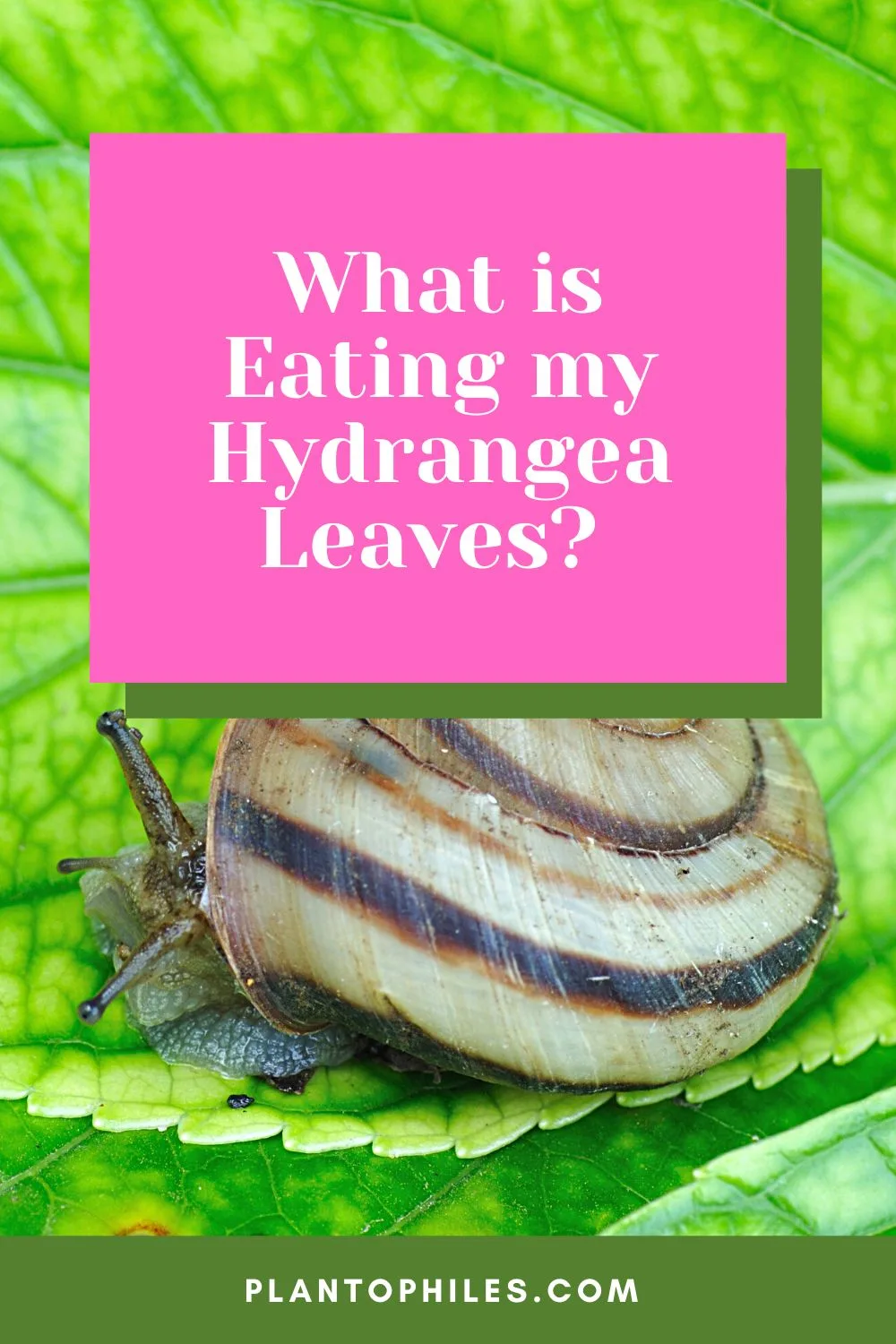
4 Common Hydrangea Pests
1. Spider Mites
These tiny arachnids eat the sap and lay their eggs on the undersides of leaves. They wrap infected areas in webbing, and the plant matter quickly decays as they eat.
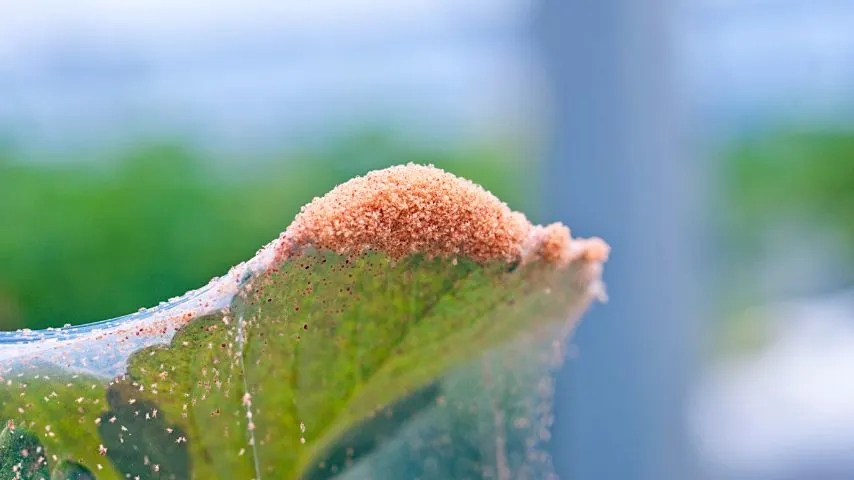
You can remove spider mites by spraying with a water solution of insecticidal soap.
If you’re outdoors or don’t want to use insecticides, you can discourage spider mites by keeping your hydrangeas wet and cool since spider mites prefer hot and dry environments.
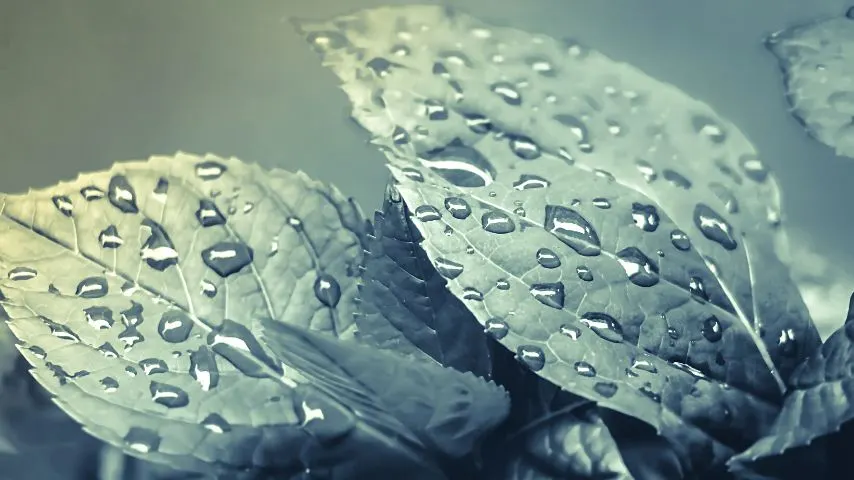
You can also add ladybugs who eat spider mites.
2. Aphids
These soft-bodied creatures cause immense damage to the hydrangea leaves quickly. They aren’t easy to see using the naked eye, but the honeydew residue they leave behind attracts ants.
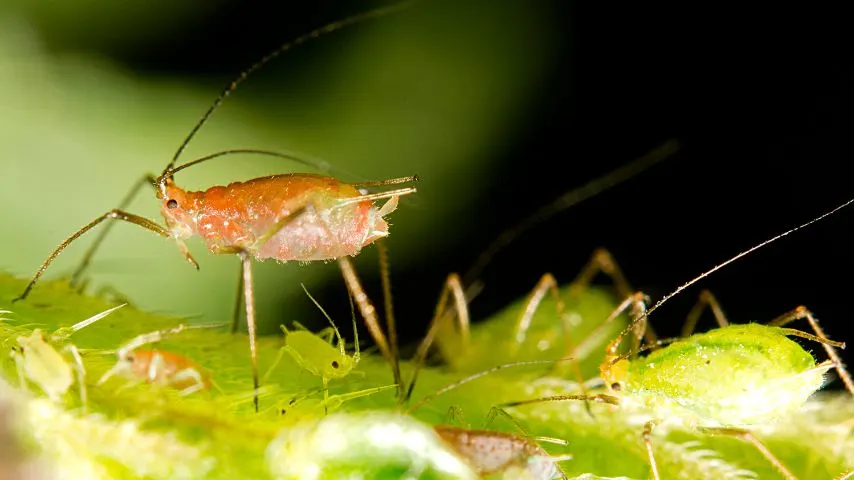
You can treat aphids by spraying the hydrangea with water (a strong stream) or washing down its leaves with an insecticidal soap solution.
3. Slugs
Jagged bite marks are characteristic of slugs munching on hydrangeas.
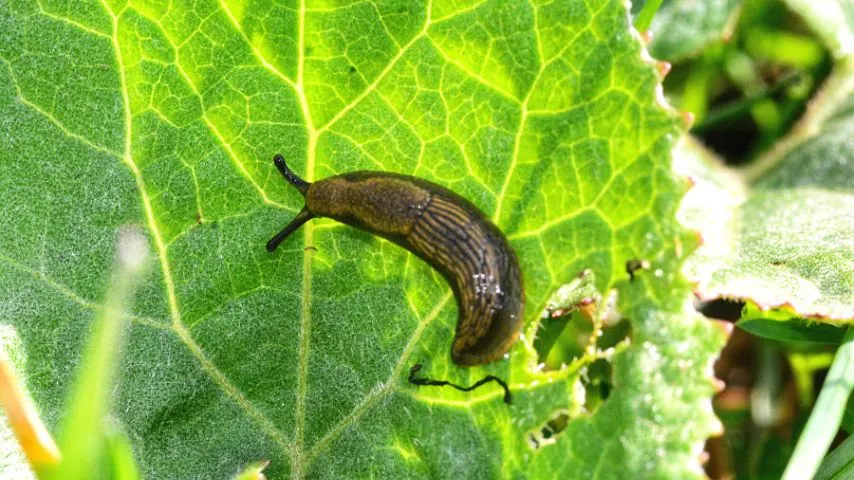
To get rid of them, spray the plant with a soapy solution. If that doesn’t work, you can set traps around the plants to kill the snails.
4. Japanese Beetles
These large brown and green insects can eat a lot of hydrangeas, especially when there are many in the middle of the summer.
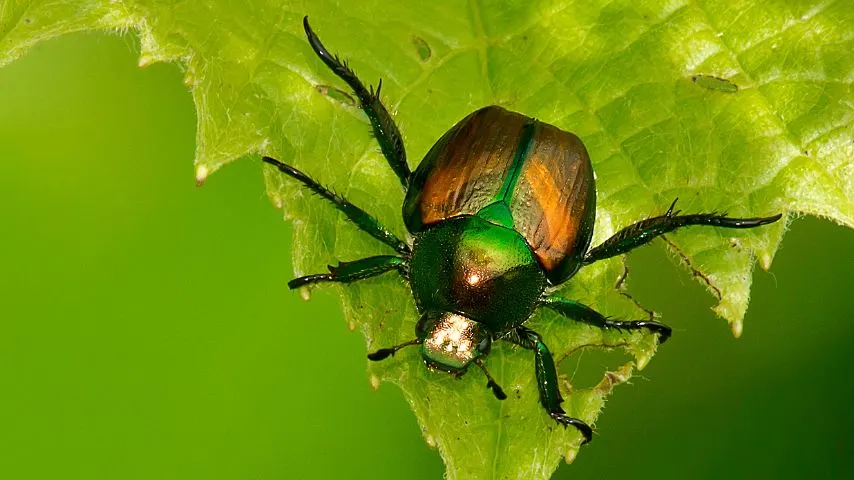
Unfortunately, the best way to defend your hydrangeas from these beetles is by manually pulling them off the plant and crushing them. Throw them into a bucket of soapy water.
It’s also possible that the issue isn’t a pest but a fungal infection that looks like bites.
If the problem areas are brown or yellow, it might not be a pest.
5. Leaf Miners
Leaf miners live in and feed off plant tissue. To get rid of leaf miners, an insecticide works best.
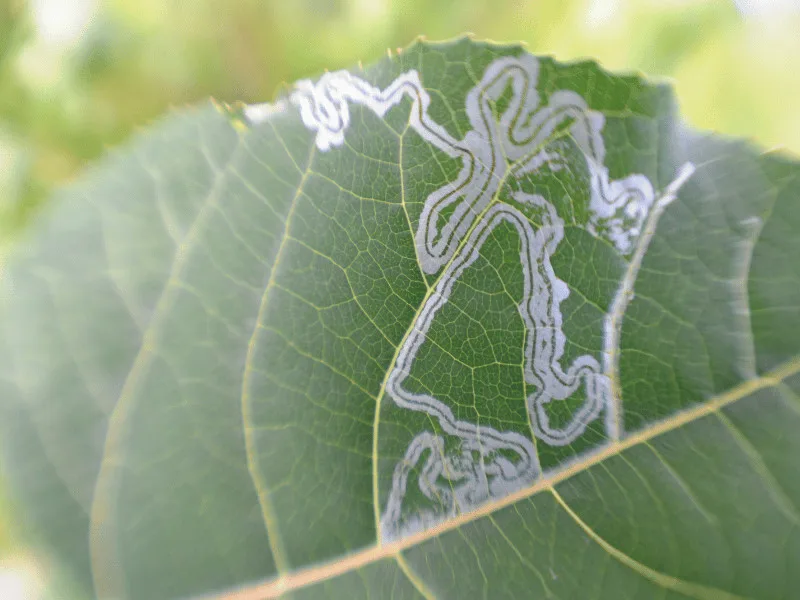
6. Catepillars
Caterpillars such as the Leaftier caterpillars set up camp on your hydrangea leaves. They curl inside the leaves that build a coast home for them. The best is to spot and remove them quickly. The last thing you want is moths that come back again.
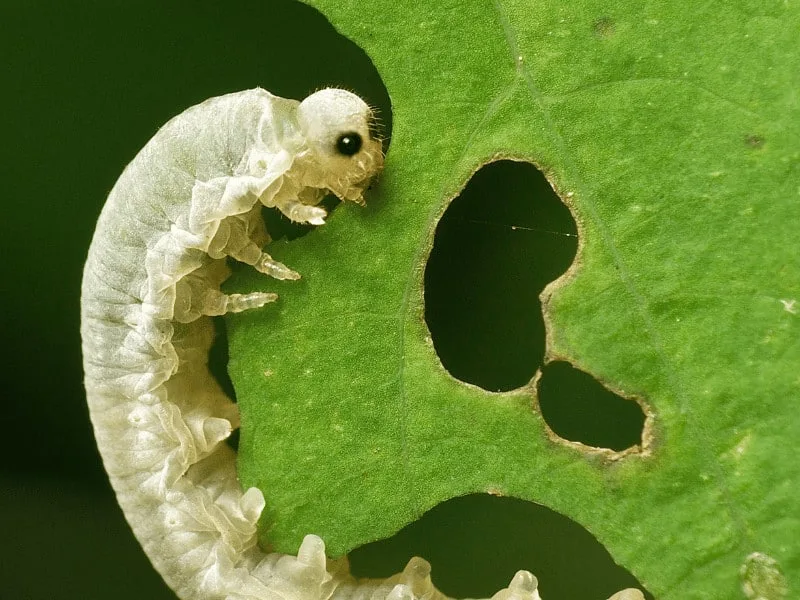
Holes in hydrangea leaves
Holes in hydrangea leaves are a clear sign of pests. Leaf miners, aphids, caterpillars, Japanese beetles, and slugs likely cause the holes.
Related: What is eating my pepper plants?
Frequently Asked Questions about Pests that Eat on Hydrangea Leaves
How Do You Protect Hydrangea Leaves?
Although many insecticides are available, these might not be efficient until you see what is eating the hydrangea. But, if your plant’s leaves are brown, spotted, and discolored, the issue may be fungal and need specific treatment, or remove the leaves entirely.
What Can I Spray On My Hydrangeas?
A water and insecticidal soap solution works against the most common hydrangea pests. There are also organic and chemical pesticides that are designed to protect against pests, as well as natural pesticides like neem oil. For mold, you would need a fungal spray.
Should I Cut Damaged Leaves Off Hydrangea?
If there are any infected or dying parts of your hydrangea, remove them cleanly so that the plant can recuperate and redirect its energy toward new growth. Although cutting off damaged leaves does weaken the plant, it will recover better than if pests hampered it.
Finding Out What’s Eating Your Hydrangeas
Diagnosing plant problems is an inexact science, but you can get a fairly good idea of what is eating your hydrangeas just by looking at the leaves.
Are there holes? Are there jagged bite marks? Do you see any residue? Are there any brown or yellow areas?
Understanding the signs of the most common hydrangea pests can help you identify them quickly.
Slugs chew jagged holes in leaves. Aphids leave a residue that attracts ants. Spider mites build webs. Japanese beetles are large enough to be spotted immediately. If it’s not a pest, it could be a fungal infection, which requires an entirely different course of treatment.
Hydrangeas don’t have a lot of common pests and are very resilient plants, but they get infected with spider mites, aphids, slugs, and Japanese beetles.

Daniel has been a plant enthusiast for over 20 years. He owns hundreds of houseplants and prepares for the chili growing seasons yearly with great anticipation. His favorite plants are plant species in the Araceae family, such as Monstera, Philodendron, and Anthurium. He also loves gardening and is growing hot peppers, tomatoes, and many more vegetables.


